Before the 1950’s iconic movie Ryan’s Daughter made Dingle a Hollywood haven, it was a small agricultural fishing port. The decline of both fishing and farming meant that the locals had to diversify. Now tourism is worth approximately €4m a year. We sampled as much as we could for this week’s Holidaying at Home feature.
Accommodation that
goes above and beyond
Helen Woods grew up on a farm in the Cooley Peninsula. Her parents Liam and Irene have farmed sheep there since 1963.
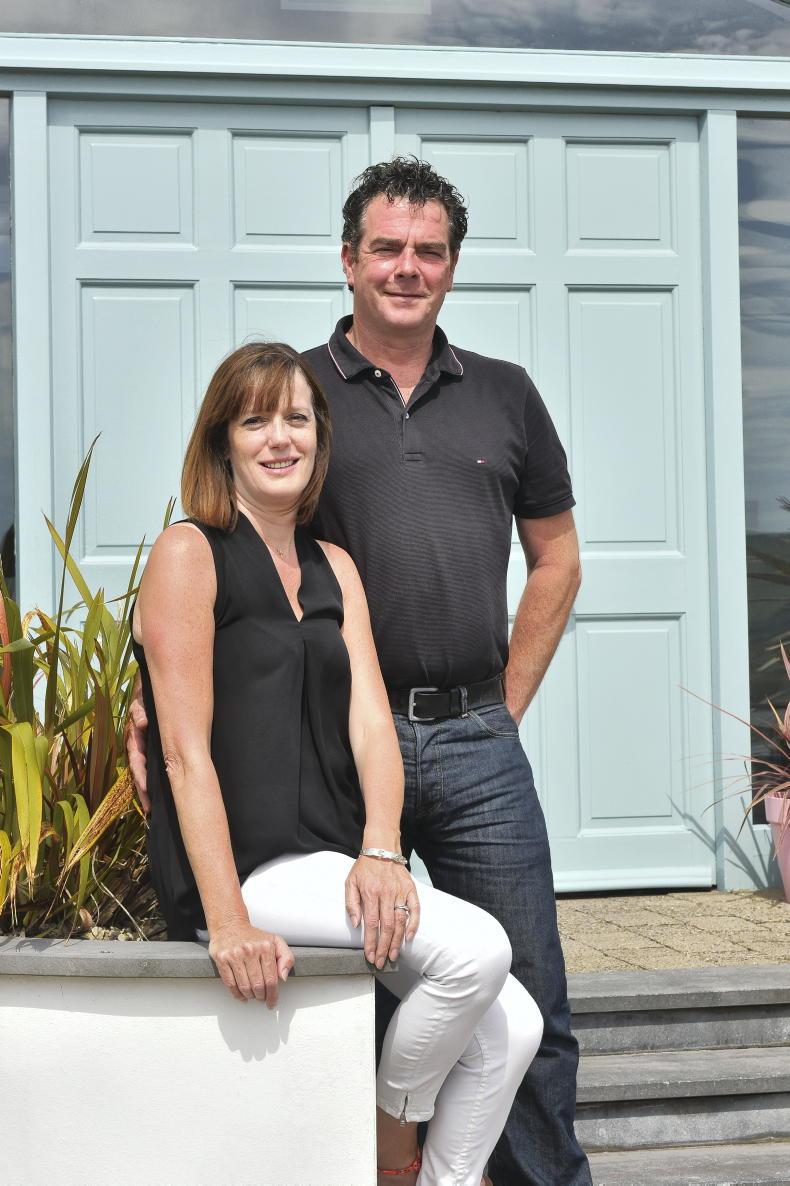
Helen and Brian Heaton own and operate Castlewood House. \ Elaine Kennedy
“In 2001 – like everyone else on the peninsula – we lost our sheep, and for my dad, it was a devastation for him. Working all his life, lambing all those sheep and all of a sudden there’s nothing in the field. There wasn’t even a grey crow because there were no lambs.”
Two years later he restarted, with cattle and now there are sheep again on Helens home farm on Cooley. But that is not the peninsula on which Irish Country Living is “holidaying at home”. We are in Helen’s (now Heaton) boutique hotel, Castlewood House on the Dingle Peninsula in Co Kerry.
Having always wanted to study hotel management, she went to DIT Cathal Brugha Street (now Technological University Dublin, TUD), graduating in 1991. Helen went to Ashford Castle, Co Mayo, for her work experience which is where she met Brian Heaton who was studying the same trade.
After college, the couple returned to Ashford Castle but eventually Helen needed a change and moved to Monaghan to work in the Nuremore where she stayed for 12 years.
She tells us it was busy at that time.
“The border was opening up and there was a lot of cross-border business with peace and reconciliation and co-operation. There were 12 meeting rooms, a golf course, 72 bedrooms and I was sales and marketing manager there.”
Having gotten married in 2000, Brian working as general manager in the Davenport (Dublin), Helen reflects that: “He was going one direction, early in the morning and I was going the other and we thought that if we want to stay together, we better try and be in the same place.”
We wanted our own place
Brian’s parents were from Limerick where they operated a clothing business. But by the mid-90s they just couldn’t compete. His mom decided there future was in hospitality and they started looking for a place to buy, eventually settling on Dingle.
“They bought the site next door (Heaton House) and of course they always had an eye on this one (the site where Castlewood is now built) for us,” she explains. “But it never actually came on the market – we bought it privately back in 2003/2004 and built in 2005. We run them (the two properties) together, same families same business.”
Boutique style
“I grew up in a very old house which dates back to 1540, sort of Georgian, and you have those big rooms and the hallway with the staircase. So, I wanted that feeling of space. We had a great architect, Brandon Williams. I didn’t want every room the exact same, I wanted them all to have their own identity, so every room is different.”
There are 12 rooms in Castlewood and 16 in Heaton House, to some it will be a boutique hotel, to some an inn and to others a guesthouse.
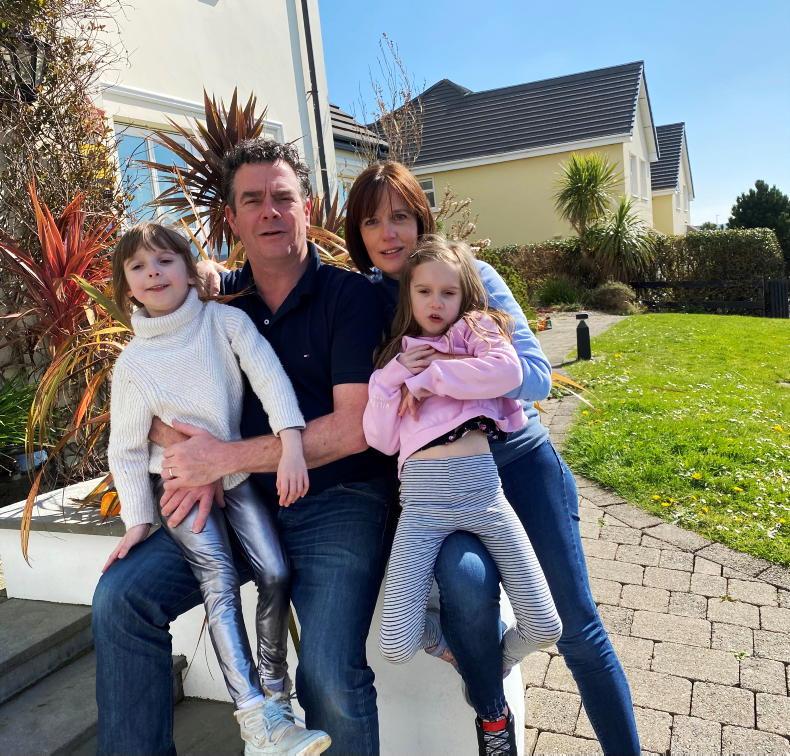
Helen and Brian Heaton with their twin girls Lara and Louisa of Castlewood House
“When we first opened we were completely persona non grata – no one knew who we were, what we were and what we did. You build that up. I suppose it’s very much your own identity as well as your own style.
Helen and Brian knew their target market, a four-star rating which is awarded by Fáilte Ireland.
“They have changed it over the last couple of years in order to bring B&Bs up, allow them to go from two-star to five-star, hotels can go from three-star to five-star and guesthouses – which we would be classed as at the minute – and they didn’t change the system; the highest you can get is four stars. So, we could become a hotel if we wanted to, but calling yourself a hotel, the first thing Irish people are going to do is come in and say ‘OK, where is the bar?’”
Helen knows her customers and being just on the outskirts of the town, people want to go into town to eat. For this reason, Helen and Brian traditionally did not do dinner service but with COVID-19, they started in June of this year.
“With the age profile of most customers, they wouldn’t want to be sitting outside. We have a company that we deal with in the US, and they have small tours that [in other years] would stay for three nights between the two proprieties. On their first night David, (Heaton, proprietor of Heaton House) who is a chef, would do dinner for them always.
“To everybody that came [since reopening in June] we said, ‘If you want to come back with your takeaway bring it back into our dining room.’ I wouldn’t want my parents to go away and have to queue and stand outside.
“We grew it organically, just word of mouth, reputation. The first really good thing that happened, TripAdvisor started doing hotel awards. We won Best for Service in Ireland in 2007, and in 2012, we won Best Small Hotel in Ireland. And then in 2014 – and I was really heavily pregnant at the time – we won Best Small Hotel in the world that year.”
Since then the hotels have always been in the rankings, best small hotel, best for service and best for romance which Helen says is massively important.
“People will go on TripAdvisor but you live by the sword, you die by the sword. I mean it’s something you have no control over. One thing you have to get right is your website, it’s your shop window. We invested money into photography but it’s honest photography. The nicest thing someone can say to you coming in the door is ‘Wow, it’s even nicer than the website.’
“Under-promise and over-deliver and attention to detail. You are always anticipating what will make the experience better.
Working locally
As we speak Helen continuously mentions different business in the town. Friends, colleagues or just recommendations.
“I’m very conscious of working with all the local providers and the activity providers. We make a nice package at the minute, and people love it; the Blasket Basket. Guests get two nights here and then go out with Billy O’Connor on his boat – the Great Blasket experience.”
COVID-19
The one thing Helen says she really misses is shaking people’s hands when they come in the door.
“Returning customers I want to give them a hug and I can’t. You feel you’re not giving of yourself, being kind of cold and I hope to God our kids don’t grow up in a world where you can’t express your gratitude and friendship your humanity.”
castlewooddingle.com
Running their boats for 35 years, Jimmy and Bridget Flannery of Dingle Sea Safari tours pretty much know everything there is to know about the waters, cliffs and wildlife that surround the Dingle peninsula.
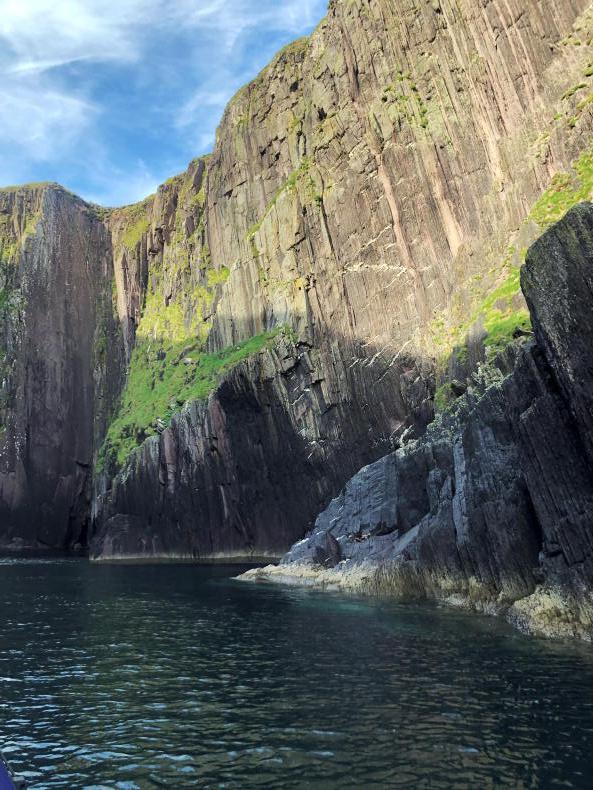
Dingle Sea Safari takes you on a tours around the Dingle peninsula.
“[We are] not showing anything new, didn’t put the scenery there, didn’t put the dolphins there, just showing them a little quicker.” This is Jimmy Flannery’s description of his fast boat tour, which will take you from Dingle Pier along the coastline all the way out to the Great Blasket Islands.
He explains the heritage of the Fungie (the dolphin) tours. Originally, there were 12 boats doing Fungie tours – six of which were in Jimmy and Bridget’s company.
There was a co-operation always between the boats, he explained as “there’s no point in having competition”. This camaraderie, which includes radioing other boats when a whale or dolphin is spotted ensures that everybody, no matter what boat they are on, is happy.
“That’s the way it works. When you go to sea everybody will look after everybody else.”
Is Fungie really gone?
The last time that Fungie was seen was between 12 and 14 October 2020. Jimmy knew very quickly that something had happened because, he sadly told us, in 35 years he had never failed to find Fungie, not one day.
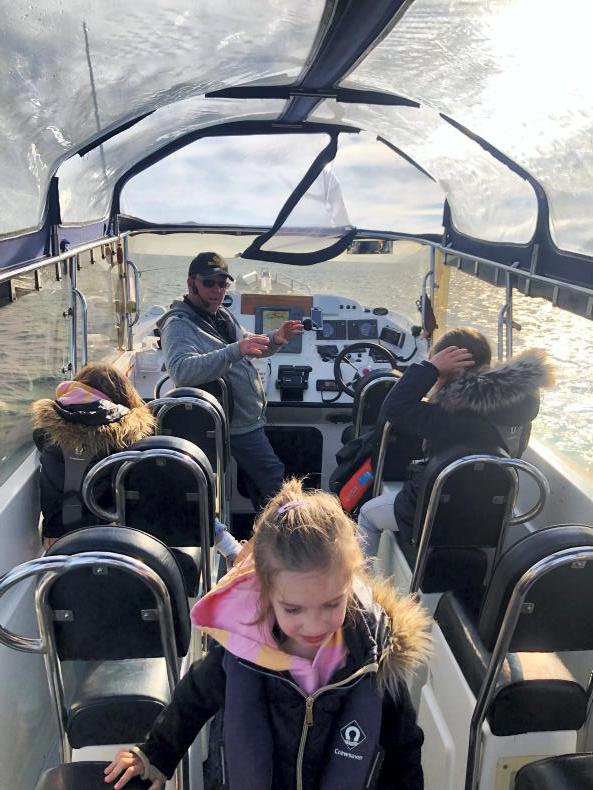
Dingle Sea Safari operates out on Dingle Bay.
“It’s not as unusual as you might think, for a dolphin to disappear. They have studied the dolphins of the Shannon for over 30 years and only two dolphins have ever washed up on the shore. So we believe they’re a little bit like a dog. When it’s time, they just go off peacefully and that will be that.”
Company for a dolphin
Jimmy was concerned for Fungie during the first lockdown as no non-essential boats could go onto the water.
“I couldn’t stand that, Fungie was there on his own and no one was going out to see him. It was the first time ever. So I took it on myself and started to go, because our house is on the water, and he was never any more than 2km away from me. The point was to keep him company.
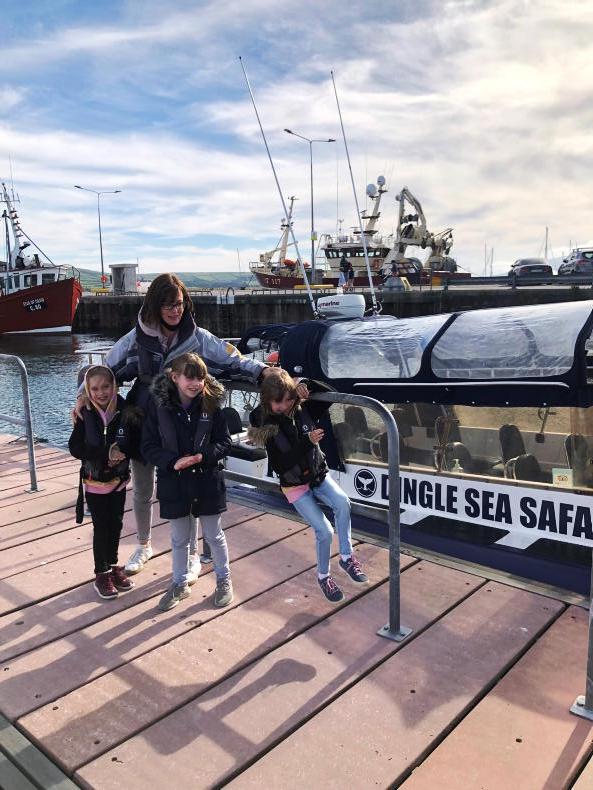
There is fun for all ages in Dingle.
When some people were not happy about this Jimmy made a call Michael Healy-Rae, TD. Jimmy recalls that when Michael called him back he said: “Jimmy you can carry on and go see Fungie”. Asking had he been granted special permission, Michael replied: “Oh God no Jimmy, you can’t get special permission, but between myself and the Minister we thought, ‘Well isn’t a farmer able to look after his livestock’ and sure isn’t Fungie your livestock? So look after your livestock”.
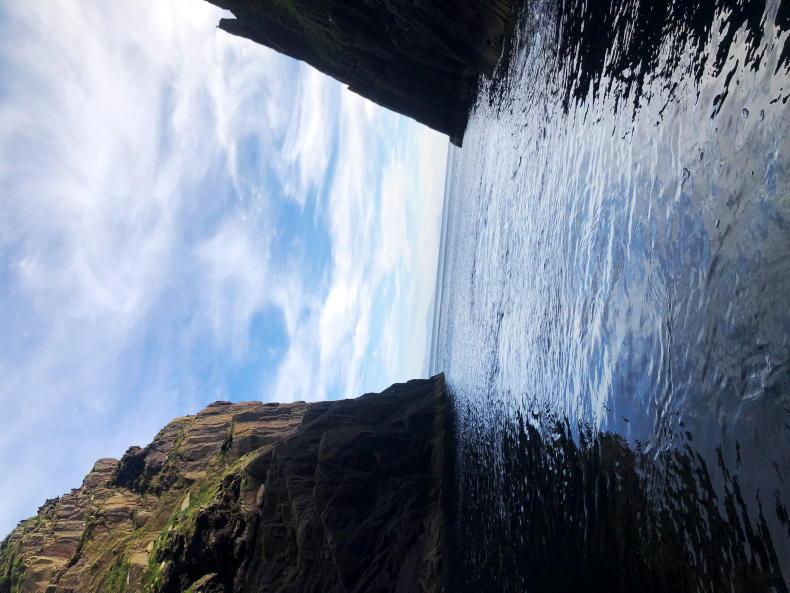
Jimmy and Bridget Flannery have been working on the water for 35 years.
Jimmy advises that younger children may find the full tour too long (2.5-3 hours) but tours can also be tailor made.
dingleseasafari.com
Lighthouse
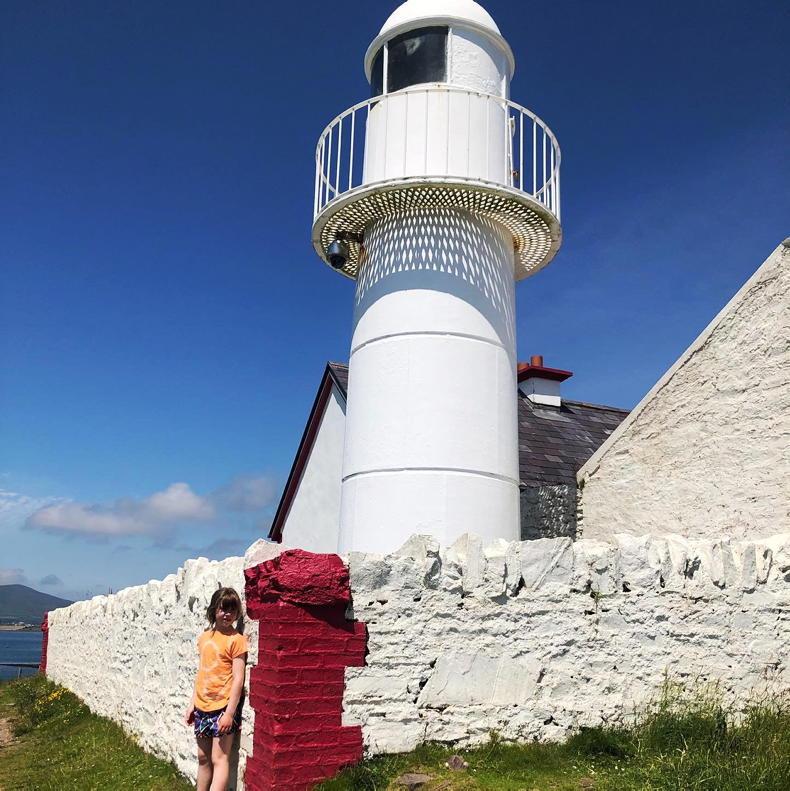
Jimmy Flannery of Dingle Sea Safari is organising for a mural of Fungie be painted on the lighthouse.
At the time of our visit, Jimmy Flannery was organising to have a mural of Dingle’s most famous sea resident painted on the gable of the lighthouse. As advised by Helen of Castlewood House, we parked at the Skellig Hotel and strolled along the coastline out to the lighthouse for our final look out to sea before heading for our land-locked home in Kilkenny.
Dingle Oceanworld
Of all the things we did in Dingle, the touch tank in the aquarium was the highlight for Raine McKeever (seven).
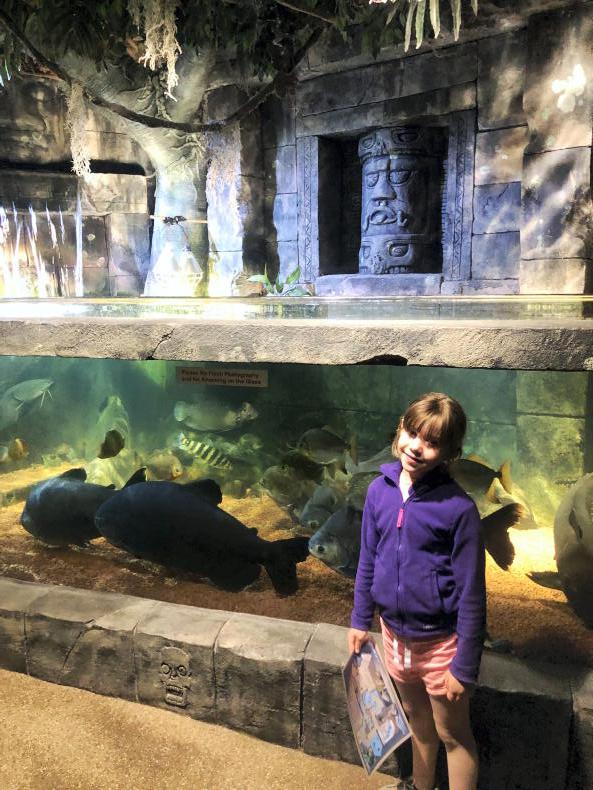
Raine McKeever's favourite part of the trip to Dingle was the touch tank at Dingle Oceanworld.
This is a very nicely laid out aquarium, clean with plenty of sea animals to see. Otters and Humboldt penguins were the latest arrivals and were very active in their new spacious enclosures. There were plenty of activities, maps, colouring, quizzes and an aquarium hunt. I could have watched the sharks for hours had I not been dragged back to the touch tank so she could run her hand along the backs of the rays.
Booking is essential. Adults are €16 and children €11. | dingle-oceanworld.ie
Ceann Sibéal Golf Club
Our last stop with Caroline Boland (see P10) was the golf course in Ceann Sibéal for dinner. To accommodate outdoor dining, a walkway overlooking the first teebox has been converted to outdoor seating. Visible from this vantage point are some of the best views on the peninsula.
The Dingle Way
If you are more energetic, and perhaps have a little more time, the Dingle Way is a way-marked walking trail of 179km in length. It does cover the entire peninsula but walkers can choose shorter paths.
Sustainable dining, with no compromise on taste
While he was trying to host front of house at his family restaurant, Micheál Flannery from the Fishbox gave us a whistle-stop explanation of who they are, what they do and most important why they do it. 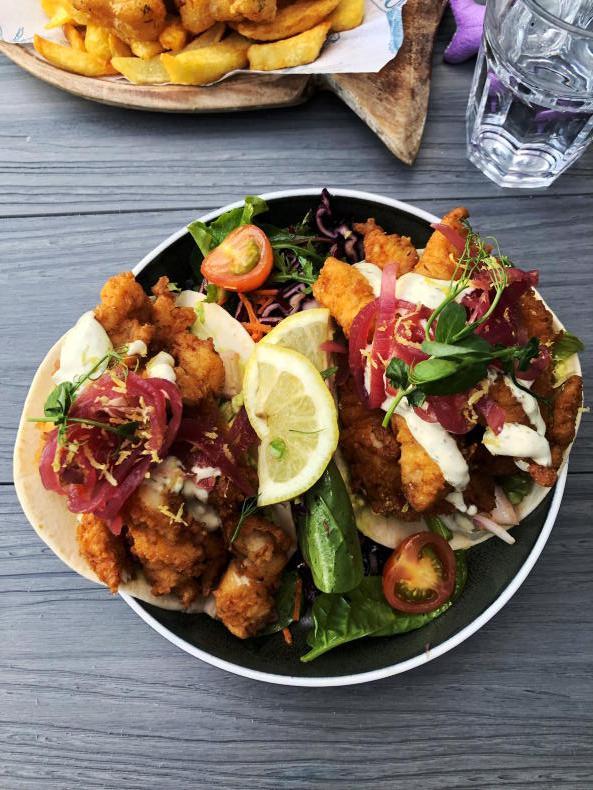
.
“So what we’re trying to do is sustainably catch all our seafood here. Before, we were exporting all over Europe, but what we are doing now is: my father owns the trawler, my brother Patrick is the skipper, my dad Michael picks it up with my uncle and they process all our fish right here. My mother Deirdre is the chef and myself and my sister Eimear look after the guests.”
By cutting out the middle man, the family are trying to maximise the value of their catch and Micheál explains that this has opened up a plethora of new avenues like squid, haddock, prawns, hake and monkfish
As they are buying all the fish off their own boat, processing it in their own preparation kitchen, this allows them more days at sea, catching different things, they don’t have to tie up. This makes it a full-time job for all those fishermen.
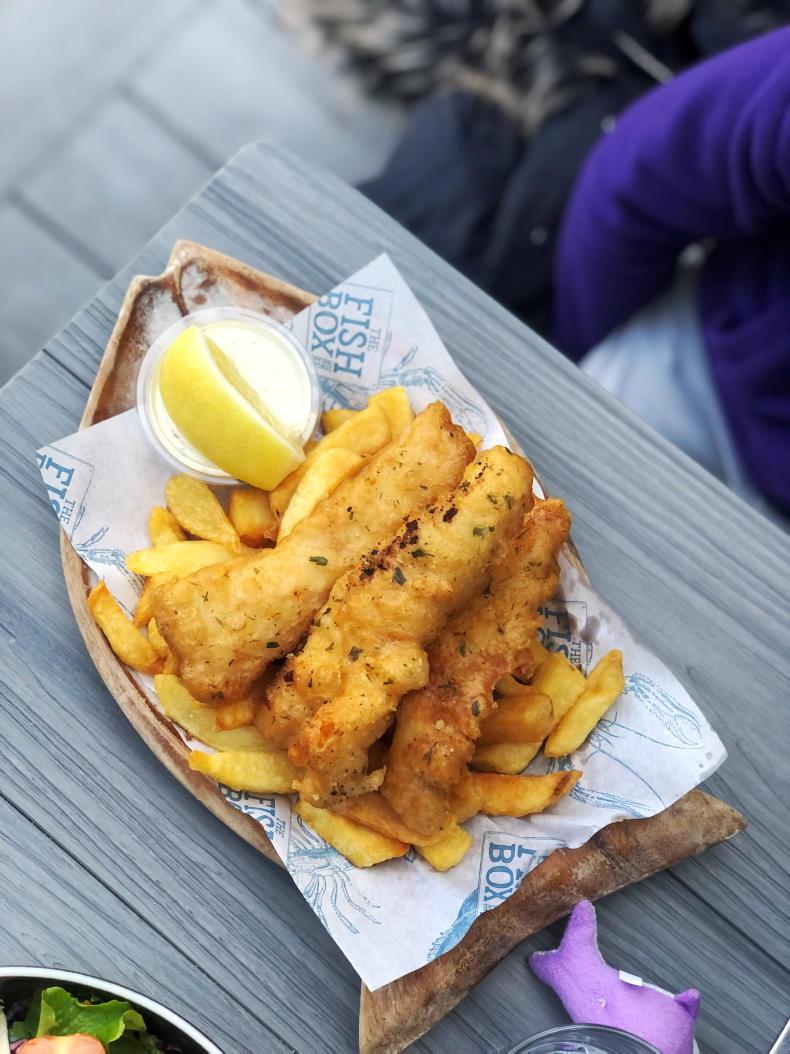
With this system, there are no levies and commissions added on, which allows the Fishbox to give out huge portions. A fact to which I will attest.
This is more than classical fish and chips, Micheál said that the idea with the restaurant was to inject some pride back into what is effectively a fishing village but also to do something really trendy not just your normal run of the mill.
The Fishbox operates as a takeaway and a sit-in (sit-out, technically) and is walk-in only. The fish kebab came highly recommended and it was fabulous for €14. Raine had a child’s portion of the goujons which was amazing value at €7.
fishboxdingle.com
Touring with a
difference
According to Caroline Boland who recently set up her own consultancy marketing the businesses of the peninsula “for tourism to work, locals have to come first”.
Caroline is originally from Dunmore East in Co Waterford but came to Dingle 25 years ago having fallen in love with the landscape. Caroline brought us on a tour of the iconic Slea Head and as we drove, she regaled us with the history, impressed upon us the importance of tourism to the peninsula and threw in a little gossip about the movie stars.
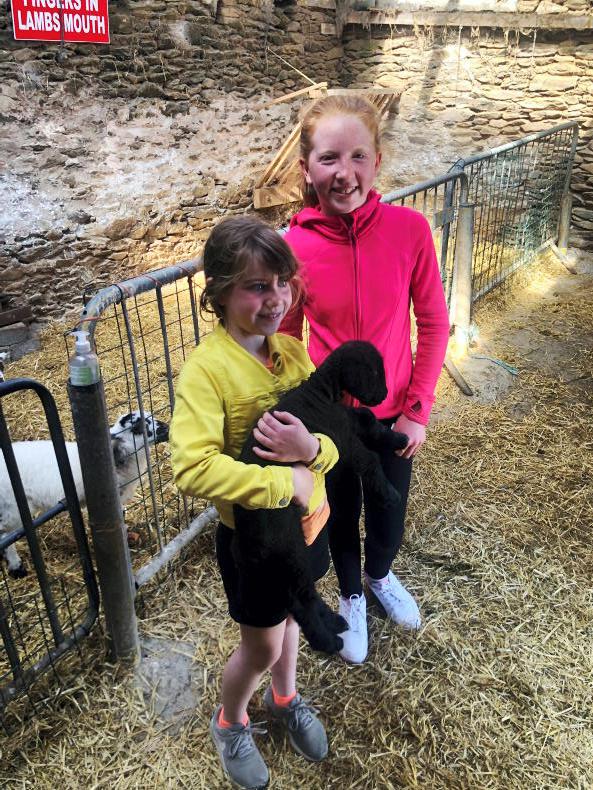
Aedán O Huallacháin, a farmer based in Ventry on the Dingle Peninsula owns and runs the very popular Hold a Baby Lamb and Beehive Huts attraction.
Starting at Burnham, we travelled through Ventry (the beach here is beautiful and enclosed) toward Slea Head and onto the farm of Aedán and Isabelle Ó Huallacháin to experience “Hold a Baby Lamb” and their beehive huts.
Caroline explained that when Star Wars, which was filmed in the area, was being marketed, Disney brought over their influencers. They couldn’t get out to Skellig Michael so they brought them to meet with Isabelle, who is an archaeologist, to get a sense of the beehives, of which there are many on the farm.
“And they had no interest, they were smitten by the lambs.”
Helen had explained to us why this can actually be a huge thing for some international tourists.
“People from the US, they might live 400 miles from the sea, they might never have seen a sheep and they go out there and they feed the baby lamb. It’s just such an experience for them, for us, it’s just a sheep, like my father will give you one of them. But, you know that’s an amazing experience for them.”
Although the lambs are lovely, Isabelle’s tour of the beehives is really engaging so give that a try too. The family also operates a B&B which can be booked through booking.com.
beehivehuts.com
Read more
Travel: the field of the gray habits
Holidaying at Home: what to do in Killaloe
Before the 1950’s iconic movie Ryan’s Daughter made Dingle a Hollywood haven, it was a small agricultural fishing port. The decline of both fishing and farming meant that the locals had to diversify. Now tourism is worth approximately €4m a year. We sampled as much as we could for this week’s Holidaying at Home feature.
Accommodation that
goes above and beyond
Helen Woods grew up on a farm in the Cooley Peninsula. Her parents Liam and Irene have farmed sheep there since 1963.

Helen and Brian Heaton own and operate Castlewood House. \ Elaine Kennedy
“In 2001 – like everyone else on the peninsula – we lost our sheep, and for my dad, it was a devastation for him. Working all his life, lambing all those sheep and all of a sudden there’s nothing in the field. There wasn’t even a grey crow because there were no lambs.”
Two years later he restarted, with cattle and now there are sheep again on Helens home farm on Cooley. But that is not the peninsula on which Irish Country Living is “holidaying at home”. We are in Helen’s (now Heaton) boutique hotel, Castlewood House on the Dingle Peninsula in Co Kerry.
Having always wanted to study hotel management, she went to DIT Cathal Brugha Street (now Technological University Dublin, TUD), graduating in 1991. Helen went to Ashford Castle, Co Mayo, for her work experience which is where she met Brian Heaton who was studying the same trade.
After college, the couple returned to Ashford Castle but eventually Helen needed a change and moved to Monaghan to work in the Nuremore where she stayed for 12 years.
She tells us it was busy at that time.
“The border was opening up and there was a lot of cross-border business with peace and reconciliation and co-operation. There were 12 meeting rooms, a golf course, 72 bedrooms and I was sales and marketing manager there.”
Having gotten married in 2000, Brian working as general manager in the Davenport (Dublin), Helen reflects that: “He was going one direction, early in the morning and I was going the other and we thought that if we want to stay together, we better try and be in the same place.”
We wanted our own place
Brian’s parents were from Limerick where they operated a clothing business. But by the mid-90s they just couldn’t compete. His mom decided there future was in hospitality and they started looking for a place to buy, eventually settling on Dingle.
“They bought the site next door (Heaton House) and of course they always had an eye on this one (the site where Castlewood is now built) for us,” she explains. “But it never actually came on the market – we bought it privately back in 2003/2004 and built in 2005. We run them (the two properties) together, same families same business.”
Boutique style
“I grew up in a very old house which dates back to 1540, sort of Georgian, and you have those big rooms and the hallway with the staircase. So, I wanted that feeling of space. We had a great architect, Brandon Williams. I didn’t want every room the exact same, I wanted them all to have their own identity, so every room is different.”
There are 12 rooms in Castlewood and 16 in Heaton House, to some it will be a boutique hotel, to some an inn and to others a guesthouse.

Helen and Brian Heaton with their twin girls Lara and Louisa of Castlewood House
“When we first opened we were completely persona non grata – no one knew who we were, what we were and what we did. You build that up. I suppose it’s very much your own identity as well as your own style.
Helen and Brian knew their target market, a four-star rating which is awarded by Fáilte Ireland.
“They have changed it over the last couple of years in order to bring B&Bs up, allow them to go from two-star to five-star, hotels can go from three-star to five-star and guesthouses – which we would be classed as at the minute – and they didn’t change the system; the highest you can get is four stars. So, we could become a hotel if we wanted to, but calling yourself a hotel, the first thing Irish people are going to do is come in and say ‘OK, where is the bar?’”
Helen knows her customers and being just on the outskirts of the town, people want to go into town to eat. For this reason, Helen and Brian traditionally did not do dinner service but with COVID-19, they started in June of this year.
“With the age profile of most customers, they wouldn’t want to be sitting outside. We have a company that we deal with in the US, and they have small tours that [in other years] would stay for three nights between the two proprieties. On their first night David, (Heaton, proprietor of Heaton House) who is a chef, would do dinner for them always.
“To everybody that came [since reopening in June] we said, ‘If you want to come back with your takeaway bring it back into our dining room.’ I wouldn’t want my parents to go away and have to queue and stand outside.
“We grew it organically, just word of mouth, reputation. The first really good thing that happened, TripAdvisor started doing hotel awards. We won Best for Service in Ireland in 2007, and in 2012, we won Best Small Hotel in Ireland. And then in 2014 – and I was really heavily pregnant at the time – we won Best Small Hotel in the world that year.”
Since then the hotels have always been in the rankings, best small hotel, best for service and best for romance which Helen says is massively important.
“People will go on TripAdvisor but you live by the sword, you die by the sword. I mean it’s something you have no control over. One thing you have to get right is your website, it’s your shop window. We invested money into photography but it’s honest photography. The nicest thing someone can say to you coming in the door is ‘Wow, it’s even nicer than the website.’
“Under-promise and over-deliver and attention to detail. You are always anticipating what will make the experience better.
Working locally
As we speak Helen continuously mentions different business in the town. Friends, colleagues or just recommendations.
“I’m very conscious of working with all the local providers and the activity providers. We make a nice package at the minute, and people love it; the Blasket Basket. Guests get two nights here and then go out with Billy O’Connor on his boat – the Great Blasket experience.”
COVID-19
The one thing Helen says she really misses is shaking people’s hands when they come in the door.
“Returning customers I want to give them a hug and I can’t. You feel you’re not giving of yourself, being kind of cold and I hope to God our kids don’t grow up in a world where you can’t express your gratitude and friendship your humanity.”
castlewooddingle.com
Running their boats for 35 years, Jimmy and Bridget Flannery of Dingle Sea Safari tours pretty much know everything there is to know about the waters, cliffs and wildlife that surround the Dingle peninsula.

Dingle Sea Safari takes you on a tours around the Dingle peninsula.
“[We are] not showing anything new, didn’t put the scenery there, didn’t put the dolphins there, just showing them a little quicker.” This is Jimmy Flannery’s description of his fast boat tour, which will take you from Dingle Pier along the coastline all the way out to the Great Blasket Islands.
He explains the heritage of the Fungie (the dolphin) tours. Originally, there were 12 boats doing Fungie tours – six of which were in Jimmy and Bridget’s company.
There was a co-operation always between the boats, he explained as “there’s no point in having competition”. This camaraderie, which includes radioing other boats when a whale or dolphin is spotted ensures that everybody, no matter what boat they are on, is happy.
“That’s the way it works. When you go to sea everybody will look after everybody else.”
Is Fungie really gone?
The last time that Fungie was seen was between 12 and 14 October 2020. Jimmy knew very quickly that something had happened because, he sadly told us, in 35 years he had never failed to find Fungie, not one day.

Dingle Sea Safari operates out on Dingle Bay.
“It’s not as unusual as you might think, for a dolphin to disappear. They have studied the dolphins of the Shannon for over 30 years and only two dolphins have ever washed up on the shore. So we believe they’re a little bit like a dog. When it’s time, they just go off peacefully and that will be that.”
Company for a dolphin
Jimmy was concerned for Fungie during the first lockdown as no non-essential boats could go onto the water.
“I couldn’t stand that, Fungie was there on his own and no one was going out to see him. It was the first time ever. So I took it on myself and started to go, because our house is on the water, and he was never any more than 2km away from me. The point was to keep him company.

There is fun for all ages in Dingle.
When some people were not happy about this Jimmy made a call Michael Healy-Rae, TD. Jimmy recalls that when Michael called him back he said: “Jimmy you can carry on and go see Fungie”. Asking had he been granted special permission, Michael replied: “Oh God no Jimmy, you can’t get special permission, but between myself and the Minister we thought, ‘Well isn’t a farmer able to look after his livestock’ and sure isn’t Fungie your livestock? So look after your livestock”.

Jimmy and Bridget Flannery have been working on the water for 35 years.
Jimmy advises that younger children may find the full tour too long (2.5-3 hours) but tours can also be tailor made.
dingleseasafari.com
Lighthouse

Jimmy Flannery of Dingle Sea Safari is organising for a mural of Fungie be painted on the lighthouse.
At the time of our visit, Jimmy Flannery was organising to have a mural of Dingle’s most famous sea resident painted on the gable of the lighthouse. As advised by Helen of Castlewood House, we parked at the Skellig Hotel and strolled along the coastline out to the lighthouse for our final look out to sea before heading for our land-locked home in Kilkenny.
Dingle Oceanworld
Of all the things we did in Dingle, the touch tank in the aquarium was the highlight for Raine McKeever (seven).

Raine McKeever's favourite part of the trip to Dingle was the touch tank at Dingle Oceanworld.
This is a very nicely laid out aquarium, clean with plenty of sea animals to see. Otters and Humboldt penguins were the latest arrivals and were very active in their new spacious enclosures. There were plenty of activities, maps, colouring, quizzes and an aquarium hunt. I could have watched the sharks for hours had I not been dragged back to the touch tank so she could run her hand along the backs of the rays.
Booking is essential. Adults are €16 and children €11. | dingle-oceanworld.ie
Ceann Sibéal Golf Club
Our last stop with Caroline Boland (see P10) was the golf course in Ceann Sibéal for dinner. To accommodate outdoor dining, a walkway overlooking the first teebox has been converted to outdoor seating. Visible from this vantage point are some of the best views on the peninsula.
The Dingle Way
If you are more energetic, and perhaps have a little more time, the Dingle Way is a way-marked walking trail of 179km in length. It does cover the entire peninsula but walkers can choose shorter paths.
Sustainable dining, with no compromise on taste
While he was trying to host front of house at his family restaurant, Micheál Flannery from the Fishbox gave us a whistle-stop explanation of who they are, what they do and most important why they do it. 
.
“So what we’re trying to do is sustainably catch all our seafood here. Before, we were exporting all over Europe, but what we are doing now is: my father owns the trawler, my brother Patrick is the skipper, my dad Michael picks it up with my uncle and they process all our fish right here. My mother Deirdre is the chef and myself and my sister Eimear look after the guests.”
By cutting out the middle man, the family are trying to maximise the value of their catch and Micheál explains that this has opened up a plethora of new avenues like squid, haddock, prawns, hake and monkfish
As they are buying all the fish off their own boat, processing it in their own preparation kitchen, this allows them more days at sea, catching different things, they don’t have to tie up. This makes it a full-time job for all those fishermen.

With this system, there are no levies and commissions added on, which allows the Fishbox to give out huge portions. A fact to which I will attest.
This is more than classical fish and chips, Micheál said that the idea with the restaurant was to inject some pride back into what is effectively a fishing village but also to do something really trendy not just your normal run of the mill.
The Fishbox operates as a takeaway and a sit-in (sit-out, technically) and is walk-in only. The fish kebab came highly recommended and it was fabulous for €14. Raine had a child’s portion of the goujons which was amazing value at €7.
fishboxdingle.com
Touring with a
difference
According to Caroline Boland who recently set up her own consultancy marketing the businesses of the peninsula “for tourism to work, locals have to come first”.
Caroline is originally from Dunmore East in Co Waterford but came to Dingle 25 years ago having fallen in love with the landscape. Caroline brought us on a tour of the iconic Slea Head and as we drove, she regaled us with the history, impressed upon us the importance of tourism to the peninsula and threw in a little gossip about the movie stars.

Aedán O Huallacháin, a farmer based in Ventry on the Dingle Peninsula owns and runs the very popular Hold a Baby Lamb and Beehive Huts attraction.
Starting at Burnham, we travelled through Ventry (the beach here is beautiful and enclosed) toward Slea Head and onto the farm of Aedán and Isabelle Ó Huallacháin to experience “Hold a Baby Lamb” and their beehive huts.
Caroline explained that when Star Wars, which was filmed in the area, was being marketed, Disney brought over their influencers. They couldn’t get out to Skellig Michael so they brought them to meet with Isabelle, who is an archaeologist, to get a sense of the beehives, of which there are many on the farm.
“And they had no interest, they were smitten by the lambs.”
Helen had explained to us why this can actually be a huge thing for some international tourists.
“People from the US, they might live 400 miles from the sea, they might never have seen a sheep and they go out there and they feed the baby lamb. It’s just such an experience for them, for us, it’s just a sheep, like my father will give you one of them. But, you know that’s an amazing experience for them.”
Although the lambs are lovely, Isabelle’s tour of the beehives is really engaging so give that a try too. The family also operates a B&B which can be booked through booking.com.
beehivehuts.com
Read more
Travel: the field of the gray habits
Holidaying at Home: what to do in Killaloe


















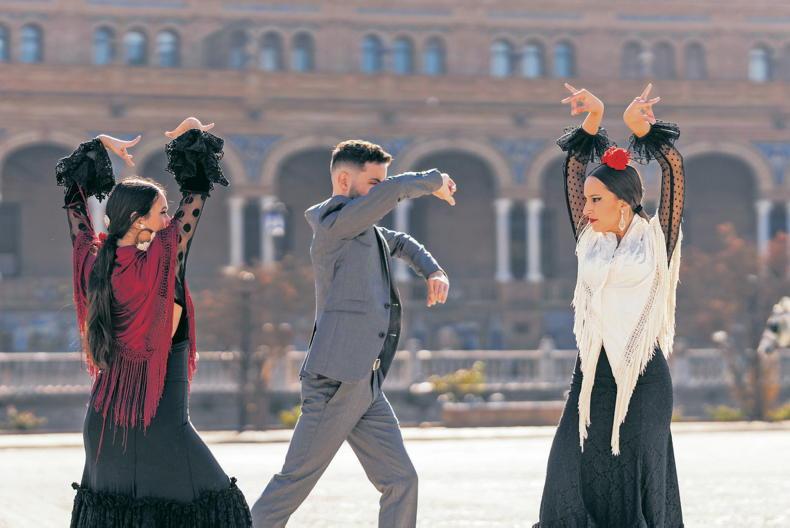
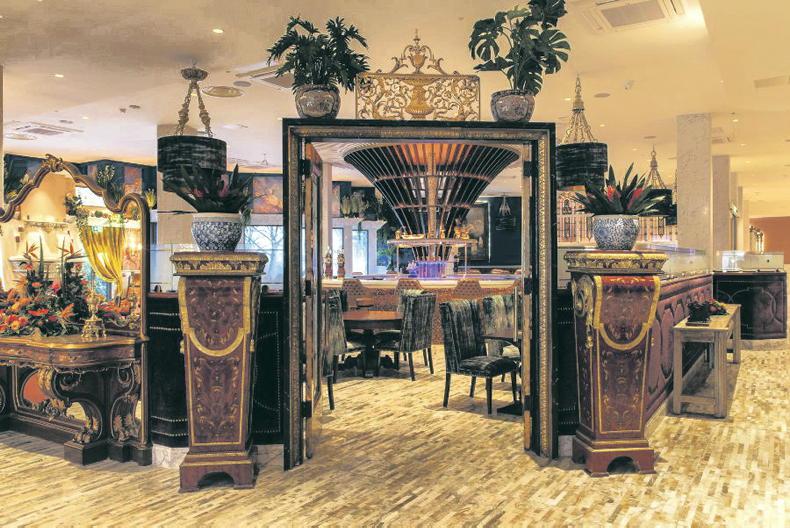
SHARING OPTIONS